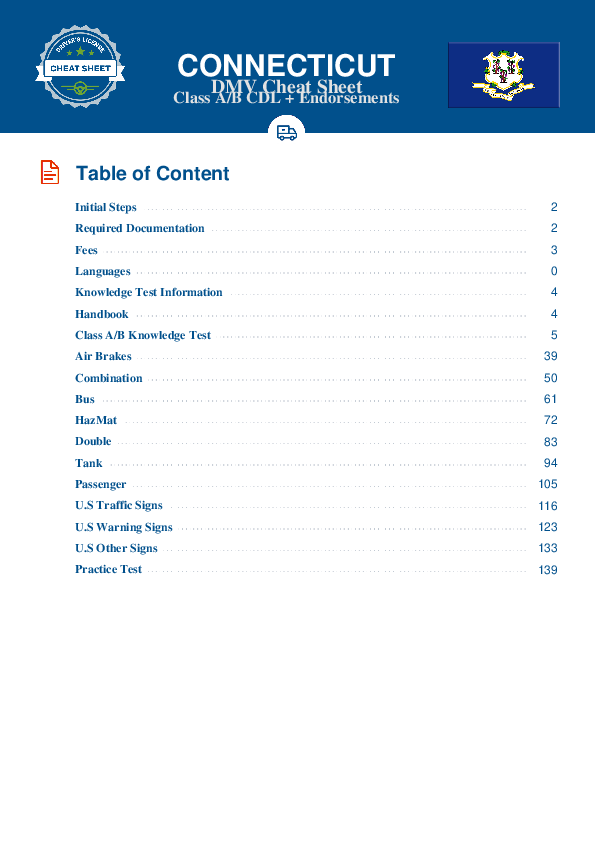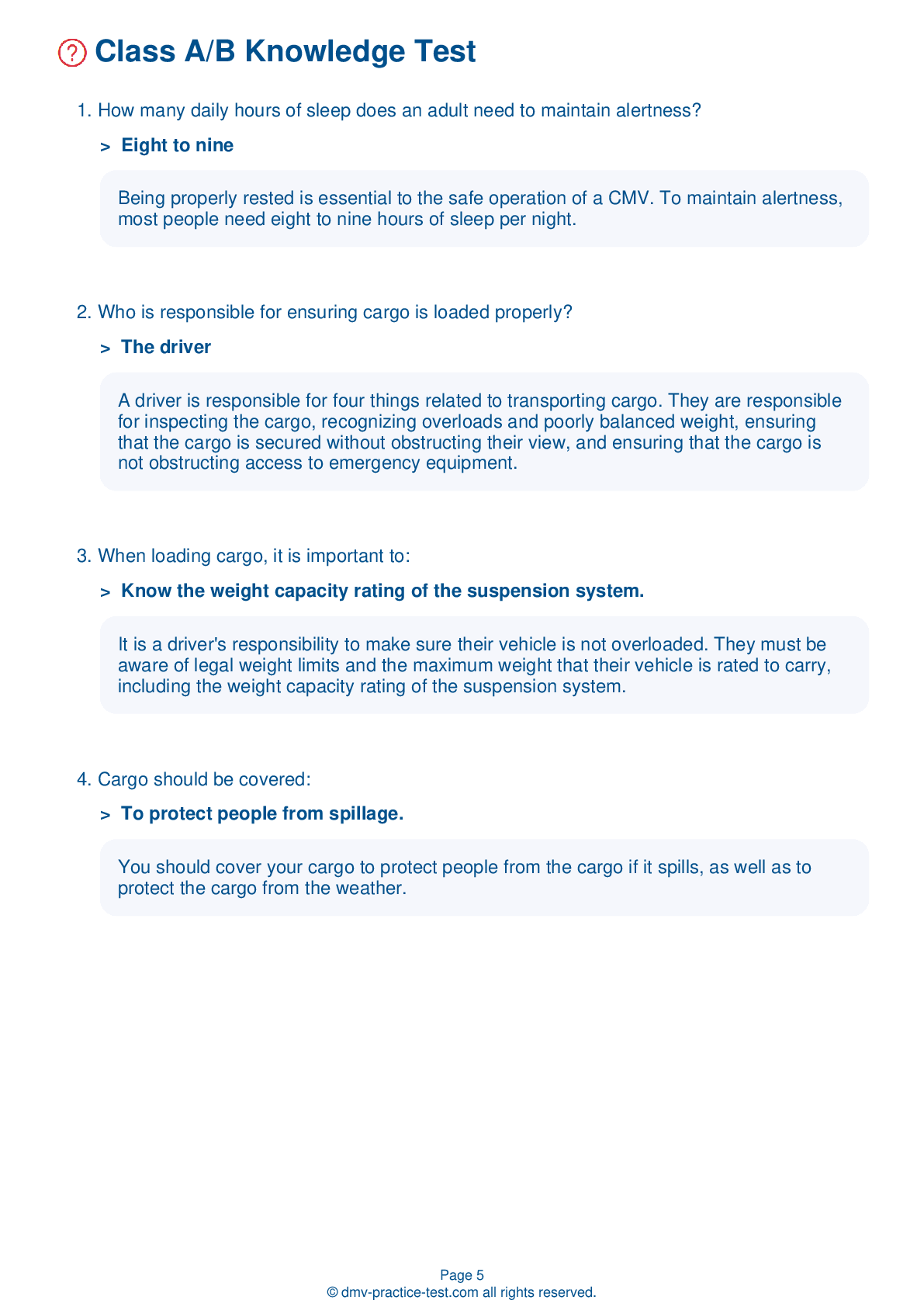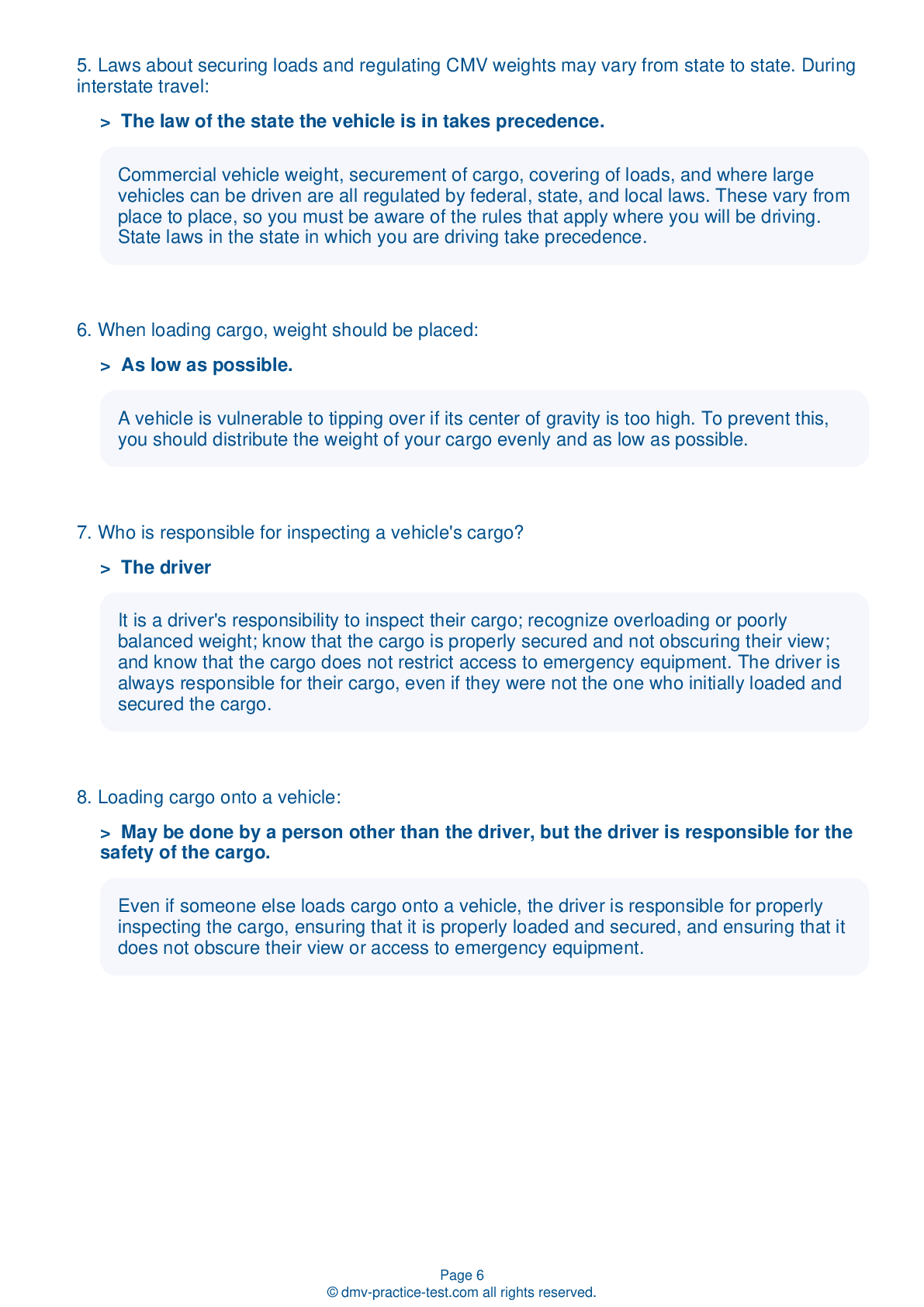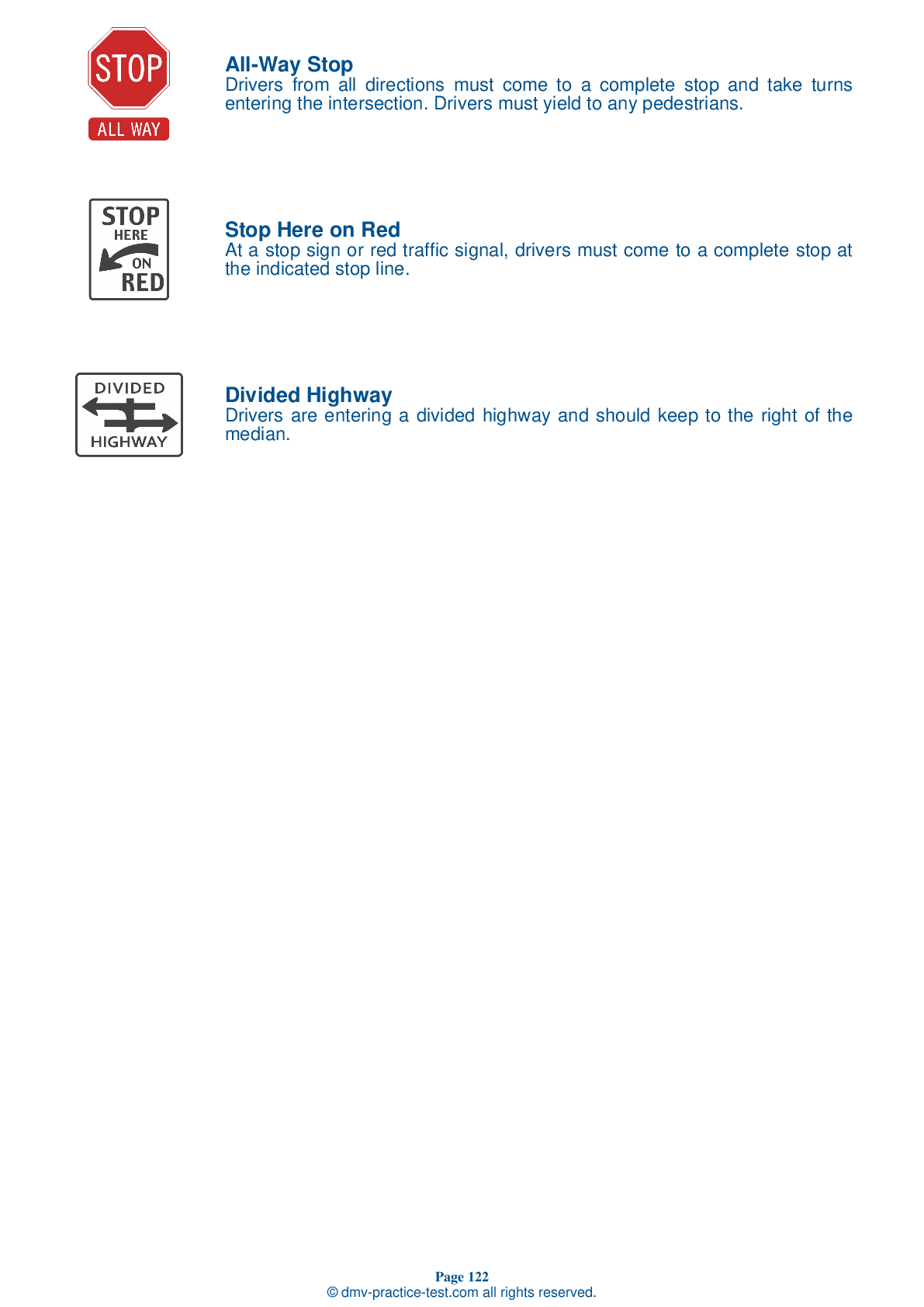Knowledge Test Class B #2
Class B Driving Test | Connecticut 2025 #2 Page 3 of 7
Train for FREE online with our Connecticut class B license test. The official exam test consists of several obligatory parts, with all of them checking your knowledge of different blocks of road rules. If you need to obtain a CT CDL class B permit in 2025, practice as much as possible. Free sample tests published on our website will help you check and improve your knowledge and boost your grades. Please bear in mind that CDL class B requirements may vary from state to state.
50
40
20
15 . When approaching a railroad crossing, you should:
Look to see if nearby plants are moving from the breeze created by a passing train
As a precaution, you should always approach a railroad crossing under the assumption that a train is coming. Do not rely only on signals or your hearing to indicate that a train is approaching.
16 . One way to prevent hydroplaning on wet road surfaces is to:
When driving on a wet road surface, the risk of hydroplaning is increased if your tire pressure is too low or your tire tread is too worn. If you begin to hydroplane, release the accelerator and push in the clutch to slow down.
17 . During the driving test, when encountering a railroad crossing, you should:
During the on-road driving test, do not stop, change gears, pass another vehicle, or change lanes while any part of your vehicle is in a railroad crossing.
18 . What should happen before the air pressure in an air brake system tank falls below 55 psi?
The low air pressure warning signal must activate before the air supply pressure drops below 55 psi in the air tank. If the warning signal does not turn on when being tested during an inspection, the vehicle is not safe to drive.
19 . When you need to brake, how can you warn drivers behind you?
Change lanes.
To warn drivers behind you that you are about to slow down, it may be a good idea to first lightly tap your brake pedal a few times to make the brake lights flash.
20 . During the basic control skills test, you will receive points if you:
The examiner will score the number of times your vehicle touches or crosses an exercise boundary line. Each encroachment will count as an error, resulting in points against your skills test score.
21 . When approaching an active railroad crossing:
There will always be flashing warning lights.
At a railroad crossing, do not assume that you will hear an approaching train. Trains may be prohibited from sounding their horns in certain areas, or the sound of its horn may be covered by noise from your vehicle. Do not assume that warning lights or other signals will announce a train.
Search the best driving school in your neighbourhood
2025 Connecticut | Frequently Asked Questions
A CDL Class B license in Connecticut allows you to operate single vehicles with a gross vehicle weight rating (GVWR) of 26,001 pounds or more, or any such vehicle towing a vehicle not exceeding 10,000 pounds GVWR. It includes vehicles like straight trucks, large buses, segmented buses, and trucks towing smaller vehicles.
A Class B CDL license in Connecticut enables the holder to operate single vehicles with a gross vehicle weight rating (GVWR) of 26,001 pounds or more, or tow a vehicle not exceeding 10,000 pounds GVWR. This includes straight trucks, large passenger buses, segmented buses, dump trucks with small trailers, and trucks towing smaller vehicles.
To acquire a Class B CDL license in Connecticut, you must be at least 21 years old (18-20 for intrastate driving), possess a valid Connecticut driver's license, pass a vision test, and successfully complete a knowledge test. After that, you must obtain a Commercial Learner's Permit (CLP), hold it for 14 days minimum, and pass a skills test.
In Connecticut, you must be at least 21 years old to qualify for a Class B CDL license for interstate transport. However, if you plan to drive only within the state (intrastate transport), you can qualify at 18 years old. It's important to note that additional requirements must also be met.
Specific endorsements are not necessary for a Class B CDL license, but they can expand your job opportunities. Endorsements certify additional skills like operating a school bus (S), passenger vehicle (P), or tank vehicle (N). You can also get an H endorsement for transporting hazardous materials. Each endorsement requires passing an additional knowledge test.
The Class B CDL skills assessment in Connecticut includes three parts: a pre-trip vehicle inspection test, a basic vehicle control test, and an on-road driving test. These tests assess your ability to inspect your vehicle, control the vehicle in various situations such as backing and turning, and safely operate the vehicle in traffic.
Yes, Class B CDL license holders in Connecticut are restricted to driving single vehicles with a gross vehicle weight rating (GVWR) of 26,001 or more pounds, or a towed vehicle not exceeding 10,000 pounds GVWR. They cannot drive a combination of vehicles (like a tractor-trailer) unless they have a Class A CDL. Additionally, they must comply with federal hours-of-service regulations.
Yes, the written Class B CDL test in Connecticut can be taken in languages other than English. The Connecticut Department of Motor Vehicles provides the test in several languages. However, federal regulations require that all CDL holders must be able to read and speak English sufficiently to converse with the general public, understand highway traffic signs and signals, respond to official inquiries, and make entries on reports and records.
Yes, you can request accommodations for the Class B CDL written exam in Connecticut if you have a disability. The Connecticut Department of Motor Vehicles complies with the Americans with Disabilities Act (ADA) and provides reasonable accommodations like extra time, a separate testing room, or use of special equipment. Be sure to make your request well in advance of your scheduled test date.
Yes, if you fail the Class B CDL written test in Connecticut, you can retake it. However, you must wait at least 7 days before retesting. There's also a retest fee that you'll need to pay each time you retake the test. It's recommended to study the manual thoroughly before retaking the test to increase your chances of passing.




